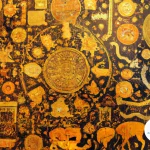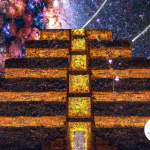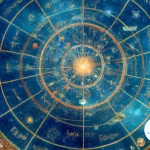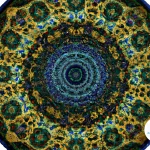Astrological Practices in Ancient Egypt: Examining the Celestial Wisdom
As the sun sets over the vast and enigmatic desert, we journey back in time to the ancient land of Egypt, where the stars held a profound significance in the lives of its people. The celestial realm was not only a source of wonder and awe, but also an integral part of their daily existence. This article delves into the captivating world of ancient Egyptian astrology, exploring its rich history, beliefs, and practices. Embark on a voyage of discovery as we unravel the secrets of solar and lunar observations, delve into the importance of zodiac signs and constellations, and uncover the divine role of planets and stars. Join us on this mystical journey to explore how astrology influenced daily life, rituals, and even dream interpretation. Step into the shoes of the ancient astrologers and discover the techniques and tools they employed, from horoscopes to divination, and explore the temples that served as centers of astrological study. Unveil the enduring legacy and influence of ancient Egyptian astrology, which continues to captivate and inspire seekers of celestial wisdom to this day.
A Brief History of Ancient Egyptian Astrology
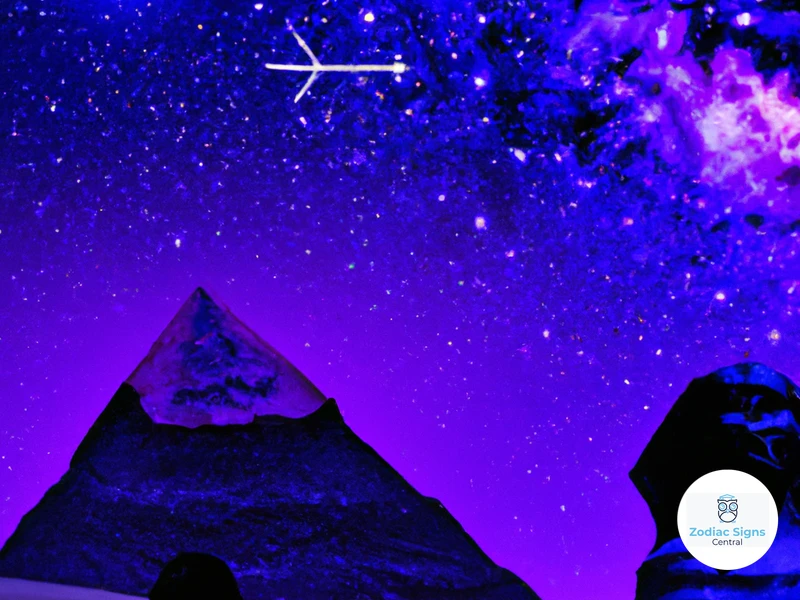
The origins of ancient Egyptian astrology can be traced back to around 3000 BCE, making it one of the oldest astrological systems in recorded history. The ancient Egyptians firmly believed that the movements of the celestial bodies held great power and influence over the events on Earth. They believed that by studying and interpreting these celestial movements, they could gain insight into the future and navigate their lives accordingly.
Astrology in ancient Egypt was intricately connected to the religious and spiritual practices of the time. The Egyptians associated different deities with the planets and stars, believing that these celestial beings played a role in guiding their lives. The Nile River, which was the source of life and fertility in Egypt, was often associated with the annual flooding and the movements of the Sirius star.
One of the earliest known texts on astrology, known as the “Decans,” dates back to the Middle Kingdom period (2055–1650 BCE). This text divided the sky into 36 sections, with each section representing a specific decan or group of stars. These decans were used to track the movement of the planets and stars throughout the year, allowing the ancient Egyptians to predict the coming seasons and agricultural cycles.
During the New Kingdom period (1550–1077 BCE), astrology in Egypt reached new heights. The pharaohs and priests sought guidance from the heavens to make important decisions regarding war, agriculture, and governance. Hieroglyphic inscriptions on temple walls showcase the importance of celestial events and their link to the fortunes of the pharaoh and the kingdom.
Astrology continued to evolve throughout Egyptian history, adapting to changes in rulers and cultural influences. It integrated elements from Mesopotamian astrology and Greek Hellenistic traditions. However, despite these influences, ancient Egyptian astrology maintained its distinct character and cosmic worldview.
In the next sections, we will explore the various astrological beliefs and concepts that were integral to ancient Egyptian astrology. We will delve into the significance of solar and lunar observations, the importance of zodiac signs and constellations, the divine role of planets and stars, as well as the interpretation of dreams and omens. Join us on this journey as we uncover the celestial wisdom of ancient Egypt and discover how it shaped the lives of its people.
Astrological Beliefs and Concepts in Ancient Egypt
Ancient Egyptian astrology was built upon a foundation of rich and intricate beliefs and concepts. The Egyptians observed the movements of the sun and the moon, recognizing their pivotal roles in the cyclical nature of life. The sun symbolized life, vitality, and rebirth, while the moon represented the passage of time and the ever-changing nature of existence. The zodiac signs and constellations also held great significance in ancient Egyptian astrology. Each zodiac sign was associated with specific qualities and personalities, providing a framework for understanding individual traits and behaviors. The ancient Egyptians believed that the positions of the stars and planets at the time of a person’s birth influenced their fate and character. They also recognized the divine role of planets and stars, associating them with various deities and their corresponding domains of influence. Dreams and omens were believed to be messages from the gods, and their interpretation played an important role in determining future events. Astrology wasn’t merely a speculative art in ancient Egypt; it permeated daily life and rituals. The Egyptians consulted astrologers and used their celestial knowledge to guide important decisions relating to agriculture, governance, and personal matters. Join us on this cosmic journey as we uncover the astrology of ancient Egypt and explore the profound impact it had on the lives of its people.
1. Solar and Lunar Observations
1. Solar and Lunar Observations
In the ancient Egyptian astrological system, the observation of celestial bodies, particularly the Sun and the Moon, played a crucial role. The Egyptians closely monitored the movements of the Sun as it traversed the sky, bringing light and warmth to the land. They recognized the cyclical pattern of the Sun’s rise and set and its impact on the changing seasons, which influenced their agricultural practices. The alignment of the Sun with specific constellations was also noted and associated with different gods and goddesses.
Similarly, the Moon held significant importance in ancient Egyptian astrology. Its waxing and waning phases were observed with great precision and believed to influence various aspects of life. The Moon’s cycle, which lasts approximately 29.5 days, was divided into distinct lunar months, each known as an “ipet” or “decade.” These lunar months were meticulously recorded in calendars, guiding the Egyptians in their religious and social activities.
The movements of the Sun and the Moon were crucial for determining auspicious dates for important events, such as religious festivals, agricultural activities, and even the coronation of the pharaoh. The alignment of the Sun and the Moon with specific zodiac constellations was believed to have a profound influence on individual destinies, and astrologers would carefully observe and interpret these alignments to provide guidance and predictions.
The Egyptians also paid attention to the solar and lunar eclipses, considering them as powerful omens. Eclipses were seen as celestial battles between beneficial and malevolent forces, and their occurrence was interpreted as a sign of potential disruptions or turmoil in the kingdom. The priests and astrologers meticulously observed and recorded these celestial events, providing the rulers with insight into the cosmic forces at play.
Solar and lunar observations provided essential insights into the ancient Egyptian understanding of the cosmos and its connection to human life. By studying the Sun and the Moon, the Egyptians sought to unlock the mysteries of the universe and gain a deeper understanding of their place within it. These observations would form the foundation for their broader astrological beliefs and practices.
[Link to Astrological Compatibility Insights article](/astro-comp-insights/)
2. Importance of Zodiac Signs and Constellations
Zodiac signs and constellations held immense significance in ancient Egyptian astrology. The ancient Egyptians believed that each individual’s personality and destiny were influenced by the position of the sun at the time of their birth. They divided the sky into 12 equal sections, each representing a different zodiac sign.
Each zodiac sign was associated with specific characteristics and qualities that were believed to influence a person’s life. For example, those born under the sign of Aries were thought to be courageous and ambitious, while those born under Taurus were seen as stubborn but reliable. These traits influenced not only an individual’s personality but also their path in life, relationships, and even career choices.
The ancient Egyptians also studied the constellations, which were groups of stars that formed recognizable patterns in the night sky. These constellations were seen as celestial markers and were used to track the movements of the sun, moon, and planets. They provided a roadmap for astrologers to interpret celestial events and make predictions.
The most important constellation in ancient Egyptian astrology was the “Duat,” which represented the path of the sun through the underworld during the night. It was believed that the soul of the deceased traveled through the Duat after death, guided by the stars and constellations. The alignment of the constellations at the time of a person’s death was seen as a reflection of their journey in the afterlife.
The understanding of zodiac signs and constellations played a crucial role in many aspects of ancient Egyptian life. From determining auspicious dates for important events to providing guidance in matters of health and relationships, astrology permeated various aspects of society. Temples served as centers for consulting astrologers and seeking celestial wisdom.
To this day, the study of zodiac signs and constellations continues to captivate those interested in astrology. Whether it’s uncovering the fiery personalities of fire signs or seeking guidance on finding balance in life as a Libra, the influence of ancient Egyptian astrology on modern astrology cannot be denied. Join us as we explore further the astrological beliefs and practices that shaped the lives of the ancient Egyptians.
3. Divine Role of Planets and Stars
The ancient Egyptians believed that the planets and stars played a divine role in shaping human lives and influencing the events of the world. Each celestial body was associated with a specific deity, and their movements were viewed as manifestations of these gods and goddesses. Here, we explore the significance of the planets and stars in ancient Egyptian astrology.
1. The Sun (Ra): The sun held the highest position of importance in the ancient Egyptian pantheon. It was associated with the god Ra, who was considered the creator and ruler of the universe. The sun was seen as a symbol of life, energy, and divine illumination. Its daily journey across the sky represented the cycle of life and death.
2. The Moon (Thoth): The moon was associated with the god Thoth, who was the patron of wisdom, writing, and magic. The ancient Egyptians believed that the moon influenced human emotions, rhythms, and fertility. Lunar cycles were closely observed for auspicious times for important activities like planting crops or conducting rituals.
3. Mercury (Wdjat): Mercury was linked to the divine eye of the goddess Wadjet. It was believed to possess a transformative and healing power. The positioning of Mercury at the time of an individual’s birth was considered significant in determining their personality traits and destiny.
4. Venus (Hathor): Venus was associated with the goddess Hathor, who represented love, beauty, and fertility. The movement of Venus in the sky was believed to influence matters of the heart, relationships, and creativity. Its alignment with other celestial bodies was thought to indicate favorable or challenging times for romantic endeavors.
5. Mars (Horus): Mars was connected to the god Horus, the symbol of power and protection. Its red color symbolized the fiery and assertive nature associated with war and conflict. In astrology, the positioning of Mars was believed to influence an individual’s courage, ambition, and assertiveness.
6. Jupiter (Amun): Jupiter was associated with the god Amun, the supreme deity of the Egyptians. Jupiter was seen as a symbol of growth, abundance, and divine blessings. Its alignment with other planets was considered particularly auspicious and indicative of prosperity and success.
7. Saturn (Hapi): Saturn represented the god Hapi, the deity of the Nile River and fertility. In astrology, Saturn was considered a planet of discipline, limitations, and karmic lessons. Its positioning in an individual’s birth chart was believed to reflect challenges and lessons they would face throughout their life.
The ancient Egyptians carefully observed the movements of these celestial bodies and believed that their interactions influenced human destiny. They consulted astrologers, or priests skilled in astrology, to interpret these celestial influences and provide guidance for important decisions or events. The divine role of planets and stars in ancient Egyptian astrology sheds light on the deep connection the Egyptians felt between the cosmos and their own existence. Explore the other sections to uncover more about the intriguing world of ancient Egyptian astrology.
4. Interpretation of Dreams and Omens
The ancient Egyptians believed that dreams and omens provided a direct link between the earthly realm and the divine. They held the conviction that the gods and goddesses communicated with mortals through the medium of dreams, offering insights, warnings, and guidance. Dream interpretation was an essential aspect of ancient Egyptian astrology, as it allowed individuals to understand the messages embedded within their nighttime visions.
Dreams were seen as a reflection of one’s fate and destiny, and their interpretation played a crucial role in decision-making and planning. Egyptian dream interpreters, known as “Masters of the Secret Things,” were highly respected and sought after for their ability to decipher the symbols and messages within dreams.
The interpretation of dreams was not a one-size-fits-all approach. Instead, it took into consideration various factors, such as the symbols present, the context of the dream, and the personal circumstances of the dreamer. These dream symbols were often associated with specific gods, goddesses, or divine beings, each carrying their own unique meanings and implications.
For example, dreams featuring animals, such as cats, snakes, or birds, were believed to be significant omens. The ancient Egyptians believed that these creatures acted as messengers between the mortal world and the divine realm. Dreams involving images of animals could be interpreted as a sign of impending danger, blessings, or even messages from deceased ancestors.
The interpretation of dreams was not limited to individuals alone. Kings, priests, and even the general population sought guidance from dreams to make important decisions. Examples of dreams guiding significant historical events can be found in the records of ancient Egypt. For instance, the dream of Thutmose IV, where he was instructed by the Sphinx to clear away the sand and become the next pharaoh, shaped the course of Egyptian history.
Ongoing observation and recording of dreams were used to identify patterns, recurring symbols, and prophetic visions. This collective wisdom became an essential part of the societal fabric, and dream interpretation became a respected and integral practice.
As we delve into the celestial wisdom of ancient Egypt, it is clear that dreams and omens played a significant role in shaping individual lives and the course of the kingdom. They were seen as glimpses into the divine plan and offered insights into one’s path and purpose. Join us as we explore the other facets of ancient Egyptian astrology that continue to captivate and inspire seekers of cosmic knowledge.
5. Astrological Influence on Daily Life and Rituals
Ancient Egyptian astrology had a profound influence on the daily lives and rituals of its people. The Egyptians believed that the positions and movements of the celestial bodies directly impacted various aspects of life on Earth. They observed the movements of the Sun, Moon, planets, and stars to gain insights into everything from agriculture and hunting to marriage and childbirth.
One of the significant ways astrology influenced daily life was through the Egyptian calendar. The calendar was intimately tied to celestial events such as the flooding of the Nile, the position of Sirius, and the heliacal rising of certain stars. By aligning their activities with these celestial occurrences, the Egyptians believed they could ensure prosperity and success.
Astrology also played a role in determining auspicious times for important events and activities. For example, the Egyptians consulted astrological charts and celestial omens to choose the most favorable dates for religious ceremonies, temple construction, and even journeys. They believed that by conducting these activities during propitious celestial alignments, they would receive the blessings and protection of the gods.
In addition to guiding daily activities, astrology influenced the development of personal beliefs and characteristics. The ancient Egyptians believed that each individual had a unique cosmic imprint based on their birth date and time. These astrological factors determined an individual’s personality traits, talents, and potential challenges. Understanding these celestial influences allowed individuals to make informed decisions about their lives and pursue paths that were in alignment with their cosmic destiny.
Astrology played a vital role in Egyptian rituals and ceremonies. Priests, who were considered the practitioners of astrology, incorporated celestial observations into their religious practices. They would consult astrological charts and omens to determine the most propitious times and rituals for various religious ceremonies. Astrological symbols and representations adorned temple walls, linking the celestial realm with the earthly realm.
To fully grasp the influence of astrology on daily life and rituals, one must consider the deep spiritual and cultural significance it held for the ancient Egyptians. The cosmic order and harmony reflected in the movements of the stars and planets were believed to be essential for maintaining balance and prosperity in both the individual and society as a whole. Astrology served as a guiding light, providing a framework for understanding the interconnectedness of all aspects of life.
As we move forward in our exploration of ancient Egyptian astrology, we will dive deeper into the practices and techniques used by the astrologers of that time. We will examine the role of priests as practitioners of astrology, the tools and instruments they utilized, and the various methods of divination and horoscope interpretation. Join us on this celestial journey to uncover the mysteries of ancient Egyptian astrology.
Astrologers and Their Techniques
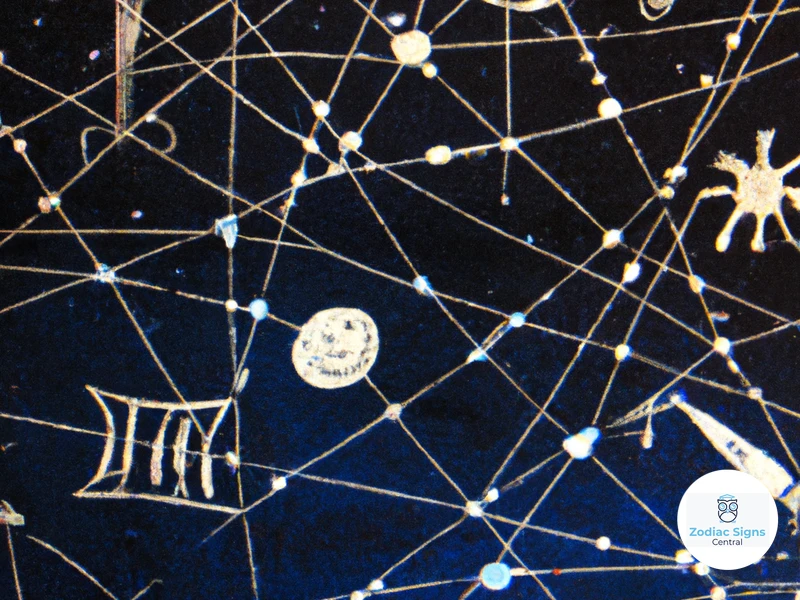
Priests played a crucial role as the practitioners of astrology in ancient Egypt. They were responsible for studying the movements of the celestial bodies and interpreting their meanings. These knowledgeable individuals possessed deep insight into the cosmos and its connection to earthly affairs. Astrologers in ancient Egypt used various tools and instruments to aid their observations. They closely observed the positions of the planets, stars, and constellations against the backdrop of the zodiac to interpret their impact on human lives. Horoscopes and divination were common techniques employed by these astrologers to provide individuals with guidance and predictions about their future. The temples in ancient Egypt served as not just religious centers, but also as important hubs for astrological study and practice. Within the sacred walls of these temples, astrologers honed their skills, exchanged knowledge, and furthered the understanding of the celestial realm. The techniques and wisdom passed down by these astrologers paved the way for the development and continuation of astrology in Egypt and beyond.
1. Priests as Practitioners of Astrology
In ancient Egypt, astrology was deeply intertwined with the religious and spiritual practices of the civilization. The practitioners of astrology were primarily priests who held immense knowledge and expertise in deciphering the celestial movements. These priests acted as intermediaries between the gods and the people, using their astrological skills to gain insight into the divine will.
Priests dedicated their lives to the study and interpretation of the stars, planets, and constellations. They would spend years honing their skills, studying ancient texts and observing the night sky to unlock the secrets of the cosmos. The priests believed that their knowledge of astrology allowed them to communicate with the gods and understand their intentions for the world and its people.
The role of the priests as astrologers went beyond mere fortune-telling. They were responsible for interpreting the celestial signs and omens, providing guidance to the pharaohs and the general populace. Their expertise in astrology played a crucial role in decision-making processes, such as determining the most auspicious time for important events, like coronations, battles, and religious ceremonies.
Priests used various astrological tools and instruments to aid in their practices. They relied on intricate star charts and celestial maps, which depicted the positions of planets and stars at specific times. These maps helped in predicting celestial events and understanding their impact on Earthly affairs. Additionally, priests used amulets and talismans crafted with astrologically significant symbols to harness celestial energies and protect individuals from malevolent forces.
The temples served as centers of astrological study, where priests gathered to share their knowledge and insights. These sacred spaces housed ancient texts on astrology and were the hub for conducting rituals and ceremonies. The priests’ expertise in astrology extended beyond the realm of divination, as they were also adept at medical astrology, using the positions of celestial bodies to diagnose and treat ailments.
The influence of priests as astrologers extended to every aspect of Egyptian society. They were revered figures who held immense power and respect. Pharaohs sought their counsel and guidance, believing that their astrological insights would ensure the prosperity and success of the kingdom. Even common people would turn to the priests for astrological advice and interpretations, seeking solace and direction in their lives.
As we explore the intriguing world of ancient Egyptian astrology, we will delve deeper into the astrological tools and instruments utilized by the priests, the techniques they employed for horoscopes and divination, and the significance of temples as centers of astrological study. Join us on this cosmic journey to uncover the wisdom of the ancient priests and their role as practitioners of astrology.
2. Astrological Tools and Instruments
In ancient Egypt, astrology was a complex and sophisticated practice that required the use of various tools and instruments for accurate observations and calculations. These tools allowed astrologers to track celestial movements, determine planetary positions, and make predictions about future events.
One of the primary instruments used by ancient Egyptian astrologers was the “merkhet,” a simple but effective device for measuring the passage of time and the movements of celestial bodies. The merkhet consisted of a long, narrow wooden board with a plumb line attached to it. Astrologers would align the plumb line with a particular star or celestial point to track its movement across the sky. This allowed them to establish accurate time markers and record the positions of stars and planets.
Another crucial tool was the “gnomon,” a device used to measure the angle and length of shadows cast by the sun. By carefully observing the shadow’s movement, astrologers could determine the time of day and calculate the sun’s position. The gnomon was also useful for determining the length of night and day, which played a significant role in agricultural and religious practices.
Astrologers in ancient Egypt also utilized astronomical texts and tables to aid in their calculations and interpretations. These texts, such as the “Book of Nut” and the “Book of the Day,” contained valuable information about the positions of planets, stars, and constellations at specific times. These texts were meticulously studied and referenced to make accurate astrological predictions and readings.
To record their observations and calculations, astrologers used papyrus scrolls and inscribed them with hieroglyphic symbols and diagrams. These scrolls provided a means of preserving astrological knowledge and sharing it with future generations.
In addition to these tools, ancient Egyptian astrologers also relied on their intuition, honed through years of study and practice, to interpret celestial phenomena and make predictions. Their deep understanding of the interconnectedness between the natural world and the celestial realm allowed them to make incredible insights into the lives and destinies of individuals and the kingdom as a whole.
To gain a deeper understanding of the astrological tools and instruments used by ancient Egyptian astrologers, click here to explore how the elements played a significant role in their practices, especially when examining fiery personalities of the fire signs.
3. Horoscopes and Divination
In ancient Egypt, horoscopes and divination played a central role in understanding one’s destiny and making important life decisions. Horoscopes were created by astrologers who meticulously studied the positions of the planets, stars, and constellations at the time of a person’s birth. These celestial configurations were thought to influence a person’s character, talents, and potential future outcomes.
To create a horoscope, an astrologer would gather information such as the date, time, and location of birth. They would then consult astronomical charts and calculations to determine the positions of the celestial bodies at that specific moment. Based on these observations, the astrologer would construct a personalized horoscope, detailing the individual’s strengths, weaknesses, and potential life paths.
Divination, on the other hand, involved seeking guidance or insight through various practices. One popular divination method in ancient Egypt was astrology-themed riddles. These riddles were posed to individuals and were believed to reveal hidden truths or provide guidance about specific situations. The answers to these riddles were often rooted in astrological symbolism and interpretations.
Another common form of divination was scrying, which involved gazing into reflective surfaces such as water or polished metal. The individual would focus their attention on the reflections and look for symbols or images that held meaning. These visuals were interpreted by skilled diviners who interpreted the messages from the spirit world or the celestial realm.
Priests and priestesses often acted as intermediaries between the people and the gods, utilizing divination techniques to gain insights into the divine will. They would interpret dreams, perform animal sacrifices, or utilize other forms of divination to aid in decision-making, predict the future, or provide spiritual guidance.
Ancient Egyptians held divination in high regard and believed that it offered them a glimpse into the unseen world. These practices provided comfort, reassurance, and guidance in uncertain times. Today, the art of horoscopes and divination continues to captivate many individuals seeking insights into their own lives and paths.
In the following sections, we will explore the techniques and tools used by ancient Egyptian astrologers, as well as the significance of temples as centers of astrological study. Join us as we unravel the mysteries of ancient Egyptian astrology and discover how it continues to shape our understanding of the celestial world.
4. Temples as Centers of Astrological Study
Temples in ancient Egypt served as sacred spaces not only for religious worship but also as centers of astrological study and practice. These magnificent structures were believed to be the earthly abodes of the gods, making them ideal places for seeking celestial wisdom.
Within the temple complexes, there were dedicated areas where priests and astrologers would study the movements of the celestial bodies and interpret their significance. The temples housed vast libraries containing papyrus scrolls and inscriptions detailing astronomical observations, astrological techniques, and interpretations.
These centers of astrological study provided a gathering place for scholars and practitioners to exchange knowledge and theories. The priests, who held great influence and power, were often the primary practitioners of astrology in ancient Egypt. They would spend hours meticulously observing and documenting celestial phenomena, mapping out the positions of the stars and planets.
The temples were equipped with specific tools and instruments needed for astrological observation. These included the use of sundials, merkhet (a type of astronomical measuring instrument), and water clocks. These instruments allowed the ancient Egyptians to track the movements of the sun, moon, and stars with precision.
Priests used their astrological knowledge to advise the pharaoh, nobles, and common people on matters such as agriculture, fertility, and personal destiny. Astrological predictions played a crucial role in decision-making, especially during times of political and economic significance.
Alongside the study and practice of astrology, the temples also conducted rituals and ceremonies that aligned with celestial events. The rising of certain stars or the alignment of the planets would trigger grand festivities and celebrations, reinforcing the connection between the gods and the cosmos.
Sadly, many of the ancient temples and their records have been lost to time or were deliberately destroyed during different periods in Egyptian history. These losses have made it challenging for modern scholars to fully comprehend the extent and intricacy of ancient Egyptian astrology.
However, the legacy of temples as centers of astrological study in ancient Egypt lives on. The knowledge and insights gained from these sacred spaces have shaped the understanding of astrology as we know it today. The ancient Egyptians’ deep reverence for the cosmos and their belief in its profound influence on human destiny continue to inspire seekers of celestial wisdom in the modern world.
Legacy and Influence of Ancient Egyptian Astrology
The legacy and influence of ancient Egyptian astrology extend far beyond the borders of Egypt itself. While the astrological practices of ancient Egypt may not be as widely practiced today, their impact can still be seen in the development of astrology throughout history.
One of the most significant contributions of ancient Egyptian astrology was its influence on Greek and Roman astrology. As Egypt came under Greek and Roman rule, the teachings and practices of Egyptian astrologers began to merge with those of the invading cultures. This fusion resulted in a blending of Egyptian, Greek, and Roman astrological traditions, giving rise to new astrological ideas and techniques.
During the Hellenistic period, the knowledge of Egyptian astrology was spread throughout the Mediterranean region. Greek astronomers and philosophers, such as Ptolemy, heavily relied on the wisdom and observations of ancient Egyptian astrologers in their own studies and writings. The concepts of zodiac signs, planetary influences, and even the division of the sky into twelve houses owe much to the astrological legacy of ancient Egypt.
The influence of ancient Egyptian astrology continued to be felt during the Islamic Golden Age. Arabic scholars, who were avid translators and preservers of classical knowledge, reinterpreted and expanded upon the astrological teachings of the ancient Egyptians. This led to the development of Arabic astrology and its subsequent spread to other parts of the world, including Europe.
In the European Renaissance, the rediscovery of ancient Egyptian texts and knowledge had a profound impact on astrology. The exploration and study of Egyptian hieroglyphs and artifacts revealed the depth and complexity of ancient Egyptian astrological wisdom. Renaissance astrologers drew inspiration from these discoveries, incorporating Egyptian astrology into their own practices and further shaping the evolution of Western astrology.
Despite the passing of millennia, traces of ancient Egyptian astrology can still be found in modern astrology practices. The symbolism and interpretation of zodiac signs, the belief in celestial influences on personality and destiny, and the use of natal charts and horoscopes all have their roots in the celestial wisdom of ancient Egypt.
The legacy and influence of ancient Egyptian astrology cannot be overstated. From its fascinating origins in the land of the pharaohs to its integration into Greek, Roman, and Arabic traditions, it has left an indelible mark on the development of astrology throughout history. The enduring wisdom and practices of ancient Egyptian astrology continue to captivate and inspire astrologers, scholars, and enthusiasts to this day, ensuring that its celestial influence remains alive and vibrant.
Conclusion
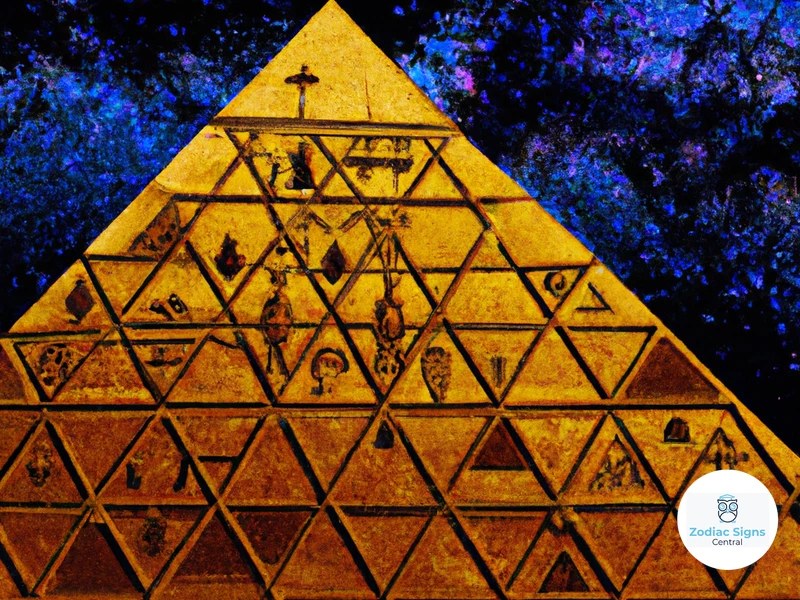
In conclusion, the ancient Egyptians held a deep reverence for the stars and celestial bodies, believing that they held profound power and influence over their lives. Astrology was intertwined with their religious and spiritual beliefs, shaping their understanding of the world and guiding their decision-making processes. From solar and lunar observations to the interpretation of dreams and omens, astrology played a central role in their daily lives and rituals.
The astrologers of ancient Egypt, primarily priests, were skilled in their craft and employed various techniques and tools to study the celestial movements. Horoscopes and divination were common practices, offering insight into the future and aiding in decision-making. Temples served as centers of astrological study, where knowledge was shared and honed.
The legacy of ancient Egyptian astrology continues to captivate and inspire to this day. Its influence can be seen in later astrological traditions, as well as the enduring fascination with the zodiac signs and their meanings. The celestial wisdom cultivated by the ancient Egyptians has left an indelible mark on the world of astrology, offering a unique perspective that echoes through the ages.
As we reflect on the celestial knowledge passed down through generations, we are reminded of the intricate connection between the heavens and humanity. Ancient Egyptian astrology serves as a testament to the enduring human desire to understand and find meaning in the cosmos. Let us continue to explore and appreciate the celestial mysteries that have shaped our history and continue to offer guidance and insight into our lives.
In our modern world, where technology dominates and the night sky can often be overlooked, we can find inspiration in the rich tapestry of ancient Egyptian astrology. As we gaze up at the stars, may we remember the wisdom of the past and allow the celestial bodies to guide us on our own unique journeys.
For more astrological insights, tips on uncovering fiery personalities of fire signs, or finding balance in life as a Libra, visit the links below:
– Astrological Insights
– Uncovering Fiery Personalities: Fire Signs
– Tips for Libra: Find Balance in Life
Frequently Asked Questions
1. What was the purpose of ancient Egyptian astrology?
Ancient Egyptian astrology served multiple purposes. It was believed to provide insight into the future, guide decision-making, and help individuals align their actions with cosmic forces. It also played a significant role in religious and spiritual practices, with the stars and planets being associated with deities and divinity.
2. How did ancient Egyptians observe the movements of celestial bodies?
Ancient Egyptians observed the movements of celestial bodies through careful astronomical observations. They tracked the path of the sun and moon, noted the position of stars and constellations, and recorded celestial events such as eclipses and planetary alignments. These observations formed the basis of their astrological predictions and interpretations.
3. Did ancient Egyptians believe in the concept of zodiac signs?
Ancient Egyptians did believe in zodiac signs, but their system of zodiac signs differed from the one commonly known today. Instead of the twelve signs we are familiar with, the ancient Egyptians had a system of twelve decans, each representing ten degrees of the zodiac. These decans played a significant role in the interpretation of astrological charts.
4. What role did dreams play in ancient Egyptian astrology?
Dreams held great significance in ancient Egyptian astrology. They were believed to be messages from the divine and were often interpreted as omens. Dream interpretation was an important aspect of astrology, offering insights into impending events and guiding decision-making.
5. Who practiced astrology in ancient Egypt?
Astrology in ancient Egypt was primarily practiced by priests. The priests were well-versed in the study of the stars and celestial movements, and their role extended beyond astrology to incorporate religious and spiritual practices. They served as intermediaries between the celestial realm and the earthly realm, providing guidance and advice based on astrological knowledge.
6. What tools and instruments did ancient Egyptian astrologers use?
Ancient Egyptian astrologers used various tools and instruments to aid their observations and calculations. These included sundials, astrolabes, and mathematical instruments like the merkhet. They also made use of astronomical texts and charts to document and record their findings.
7. Were horoscopes used in ancient Egyptian astrology?
Horoscopes, as we know them today, were not commonly used in ancient Egyptian astrology. Instead, astrologers created and interpreted astrological charts known as “nativity charts” or “birth charts.” These charts were based on an individual’s birth date, time, and location, and were used to determine their characteristics, fortunes, and potential future events.
8. Were temples important centers of astrological study in ancient Egypt?
Yes, temples held great importance as centers of astrological study in ancient Egypt. They served as places of learning, where priests and astrologers gathered to study the celestial bodies, conduct rituals, and seek divine guidance. Temple inscriptions often contained astronomical and astrological information, showcasing the connection between spirituality and the cosmos.
9. How did ancient Egyptian astrology influence daily life and rituals?
Astrology influenced many aspects of daily life in ancient Egypt. It played a role in decision-making, such as determining auspicious times for important activities like planting crops or embarking on journeys. Astrological beliefs were also incorporated into religious rituals and ceremonies, where offerings and prayers were made to seek the favor of the gods associated with celestial bodies.
10. What is the legacy of ancient Egyptian astrology?
The legacy of ancient Egyptian astrology extends beyond its historical significance. It has inspired and influenced astrological practices in various cultures and continues to captivate people’s imaginations today. The knowledge and interpretations passed down by ancient Egyptian astrologers have shaped our understanding of celestial movements and the profound connection between the cosmos and human existence.
References
Frequently Asked Questions
1. Was astrology widely practiced in ancient Egypt?
Astrology was indeed widely practiced in ancient Egypt, with evidence of its importance found in numerous texts, artifacts, and architectural structures.
2. How did ancient Egyptians observe the celestial bodies?
Ancient Egyptians closely observed the movements of the sun, moon, planets, and stars. They used both naked-eye observations and simple instruments to track the celestial bodies.
3. What role did the zodiac signs and constellations play in ancient Egyptian astrology?
Zodiac signs and constellations held great significance in ancient Egyptian astrology. They were used to determine personality traits, predict future events, and guide daily life decisions.
4. How did ancient Egyptians believe that planets and stars influenced human lives?
Ancient Egyptians believed that planets and stars represented different deities and had direct influence over human lives, affecting everything from health and wealth to emotions and relationships.
5. Were dreams and omens important in ancient Egyptian astrology?
Yes, dreams and omens were highly valued in ancient Egyptian astrology. They were seen as messages from the gods and were interpreted to gain insights into future events and make important decisions.
6. Who practiced astrology in ancient Egypt?
Astrology was predominantly practiced by priests in ancient Egypt. They were considered the keepers of celestial wisdom and were responsible for conducting astrological rituals and making predictions.
7. What tools and instruments did ancient Egyptian astrologers use?
Ancient Egyptian astrologers used various tools and instruments, including sundials, star charts, and astrolabes. These instruments helped in tracking celestial movements and making astrological calculations.
8. Did ancient Egyptian astrologers create horoscopes?
Ancient Egyptian astrologers did create horoscopes based on the positions of the celestial bodies at the time of a person’s birth. These horoscopes were used to gain insights into an individual’s character and destiny.
9. Were there specific temples dedicated to the study of astrology in ancient Egypt?
Yes, there were temples in ancient Egypt that served as centers for the study and practice of astrology. These temples housed astrological texts, conducted rituals, and provided education to aspiring astrologers.
10. How did ancient Egyptian astrology influence later civilizations?
Ancient Egyptian astrology had a significant influence on later civilizations, particularly on Greek and Roman astrology. Many of the concepts, symbols, and techniques from ancient Egypt were adopted and integrated into these subsequent astrological traditions.

